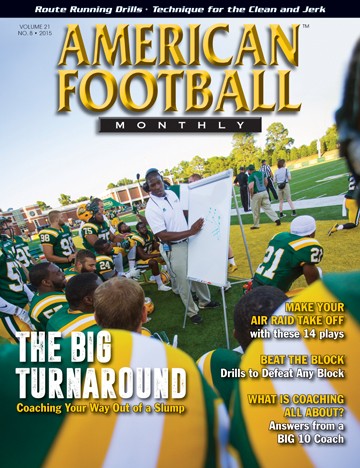Article CategoriesAFM Magazine
|
Speed Report: Mining for Nuggets – Understanding the Gems That Maximize Football Speedby: Dale BaskettFootball Speed Specialist © More from this issue For the last nine years I have had the opportunity to write an article a month for AFM and I must say I’m still stimulated to impart knowledge that’s useful to the football world. The driving force for me each month is having the privilege to present solid changes that work because they are fact-based and scientifically sound.
|
|
|||||||
| HOME |
MAGAZINE |
SUBSCRIBE | ONLINE COLUMNISTS | COACHING VIDEOS |
Copyright 2026, AmericanFootballMonthly.com
All Rights Reserved





